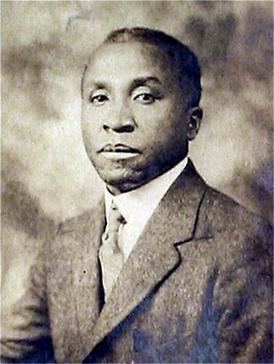Nationality American Name Walter Bailey Died February 21, 1941 | Occupation Architect Role Architect | |
 | ||
Buildings Bathhouse Row, First Church of Deliverance | ||
Walter T Bailey Kewanee Architect
Walter Thomas Bailey (1882–1941) was an American architect from Kewanee, Illinois. He was the first African American graduate with a bachelor of science degree in architectural engineering from the University of Illinois at Urbana-Champaign and the first licensed African-American architect in the state of Illinois. He worked at the Tuskegee Institute, and practiced in both Memphis and Chicago.
Contents
- Walter T Bailey Kewanee Architect
- Walter T Bailey Historical Discussion
- Early life and Education
- Architectural career
- Death
- Selected works
- References
Walter T. Bailey Historical Discussion
Early life and Education
Walter Thomas Bailey was born January 11, 1882 in Kewanee, Illinois, where he attended Kewanee High School. He enrolled at the University of Illinois at Urbana-Champaign in 1900. Bailey was the first African-American graduate of the University of Illinois' School of Architecture with a bachelor of science in architectural engineering. He earned that degree in 1904 and was granted an honorary master's degree in architecture from the university in 1910.
Architectural career
Bailey was the first licensed African-American architect in the state of Illinois. Initially, after he graduated, Bailey worked for a small architectural firm owned by Harry Eckland in his hometown of Kewanee. During this time he also worked for a Champaign, Illinois firm, Spencer & Temple. Bailey assisted in the planning of the 1905 Colonel Wolfe School in Champaign during this period.
In 1905 Bailey was appointed as the head of the Mechanical Industries Department at the Tuskegee Institute. While at Tuskegee, Bailey designed several campus buildings including White Hall (1908), and a girl's dormitory. He remained at Tuskegee until 1916 when he moved to Memphis and opened a practice on Beale Street. After Bailey's move to Memphis he began the first of multiple commissions for the Knights of Pythias. He designed the Mosaic State Temple Building and the Pythian Theater Building, both in Little Rock in 1922. The next year he undertook another Arkansas commission, this one in Hot Springs, the Pythian Bath House and Sanitarium.
Through his Knights of Pythias connections Bailey was given what would be the largest commission of his career, the National Knights of Pythias Temple in Chicago, Illinois. Construction began on the building in 1924 and Bailey moved his office to the city. The site of the temple was on Chicago's south side in an area known as "Bronzeville" or "Black Metropolis". Bailey first rented an office on the second floor of the Overton Hygienic Building on South State Street. Construction on the National Knights of Pythias Temple proceeded slowly and by 1928 the interior of the building remained unfinished. Though the Knights of Pythias eventually lost ownership of the building, Bailey did maintain his office in the structure after its completion.
Aside from the Knights of Pythias Temple in Chicago Bailey had few major commissions during the 1920s and the subsequent Great Depression greatly decreased business for Bailey and many other black entrepreneurs in the area. The last major project for Bailey was the Chicago Landmark art moderne First Church of Deliverance in 1939.
Death
Walter T. Bailey died on February 21, 1941 from pneumonia and complications caused by heart disease. Obituatries at the time stated he was working on two projects when he died. One was the Olivet Baptist Church, the other was reportedly the Ida B. Wells Homes but that work was probably in a secondary capacity.
